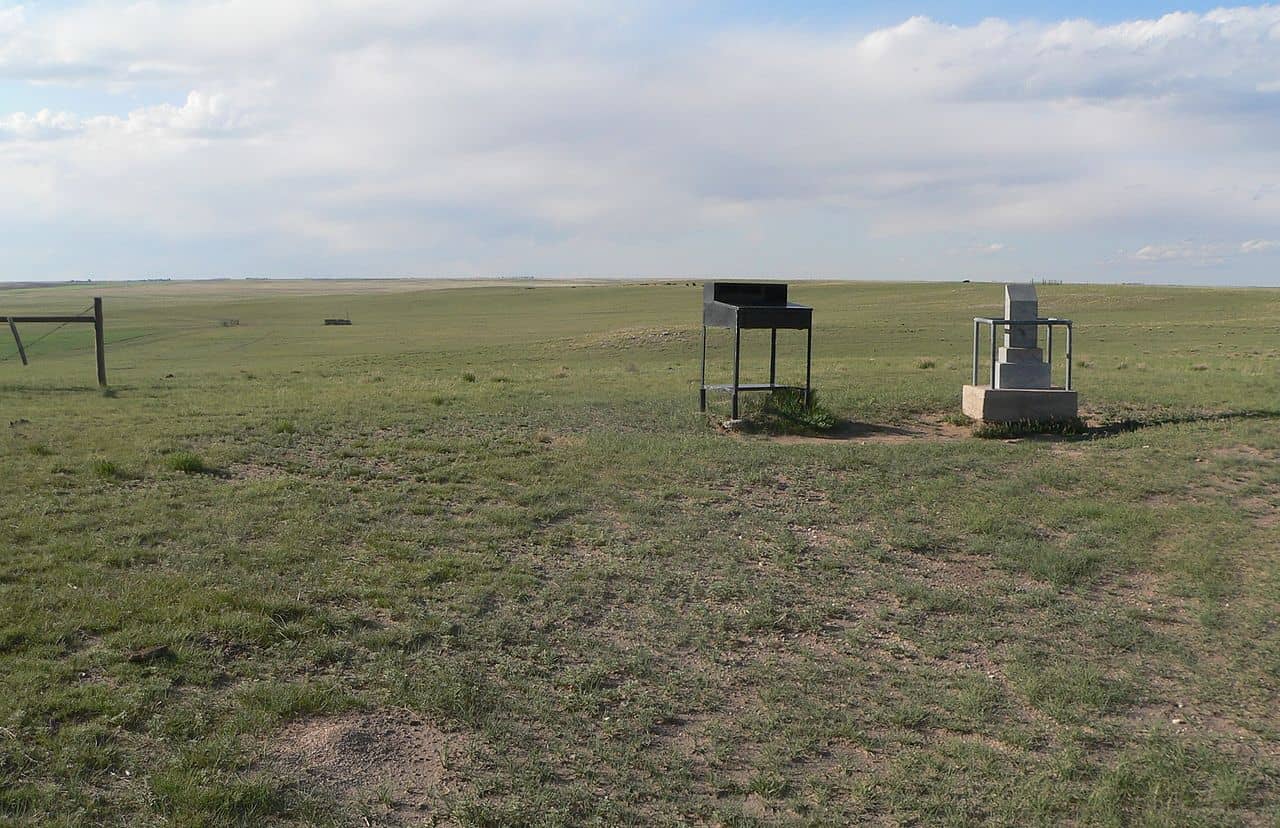Panorama Point is the highest point in Nebraska. While it has a higher elevation, there are still many animals that prowl atop Panorama Point. Some of these people specifically go to see, like the bison. However, you’ll also find animals like rattlesnakes. Therefore, it’s important to understand what animals you can expect.
Because the area is so high, vegetation is mostly just grasses. Therefore, grazing animals like bison and deer are most common. You may sometimes see coyotes and similar animals, though. Panorama Point is on private land located within High Point Bison Ranch, and it’s open certain times of the year.
1. Bison
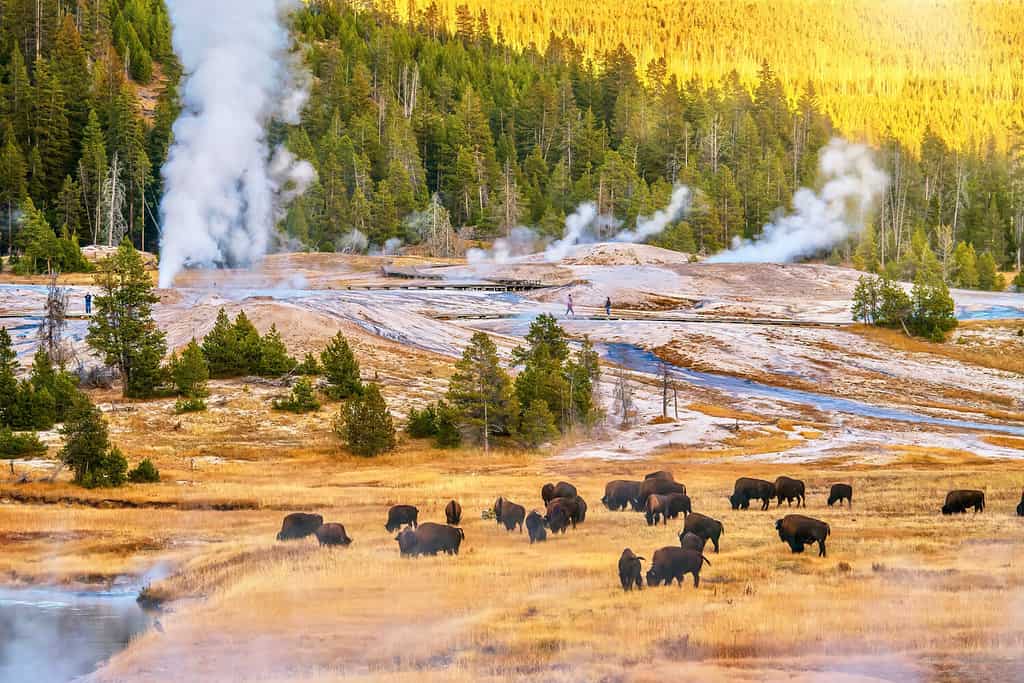
Panorama Point is home to large herds of bison.
©CherylRamalho/Shutterstock.com
Bison are one of the most common animals at Panorama Point. They are huge grazing animals that can weigh up to 2,000 pounds. Because they’re social animals, they can live in herds of up to 100 individuals.
As you might guess, bison are herbivores, eating a variety of grasses, leaves, and shrubs. They are an extremely important part of the ecosystem at Panorama Point. They keep the grassland healthy by preventing the grasses from growing too high and grazing on invasive plants.
Bison are a common tourist attraction at Panorama Point. Visitors can drive to the point and often see bison grazing in the distance. However, it’s very important that bison are respected and never approached, as they can be dangerous when threatened. You should not make any sudden movements.
2. Deer
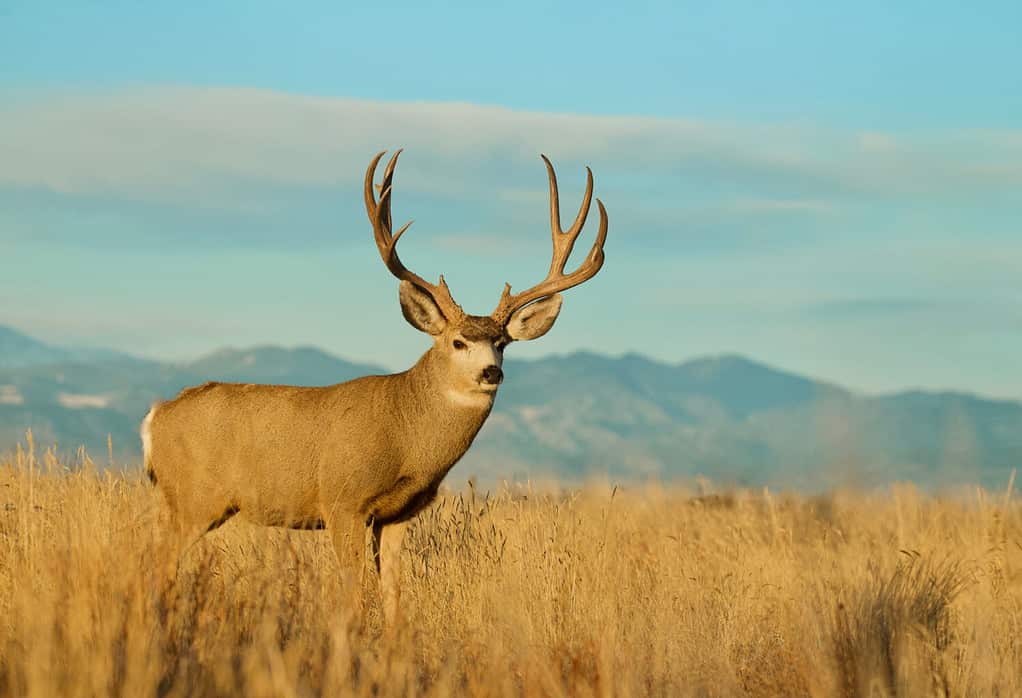
Mule deer are commonly seen on the plains alongside the bison.
©Tom Reichner/Shutterstock.com
Deer are an extremely common animal at Panorama Point. These smaller, hoofed animals weigh up to 300 pounds and are somewhat social, so they are commonly seen in groups.
These animals are herbivores, so they eat a variety of different plants. They graze on the grasslands just like the bison do, consuming invasive plants. You’ll find deer of all sorts at the point. They’re more skittish than bison, so they aren’t as much of a common sight. However, you can still see them grazing occasionally.
Panorama Point, shielded by the natural barrier of the surrounding mountains, functions as a refuge, providing a secure environment free from predators and human disturbances. This geographical seclusion allows the deer to thrive and maintain a viable population.
3. Mountain Lions
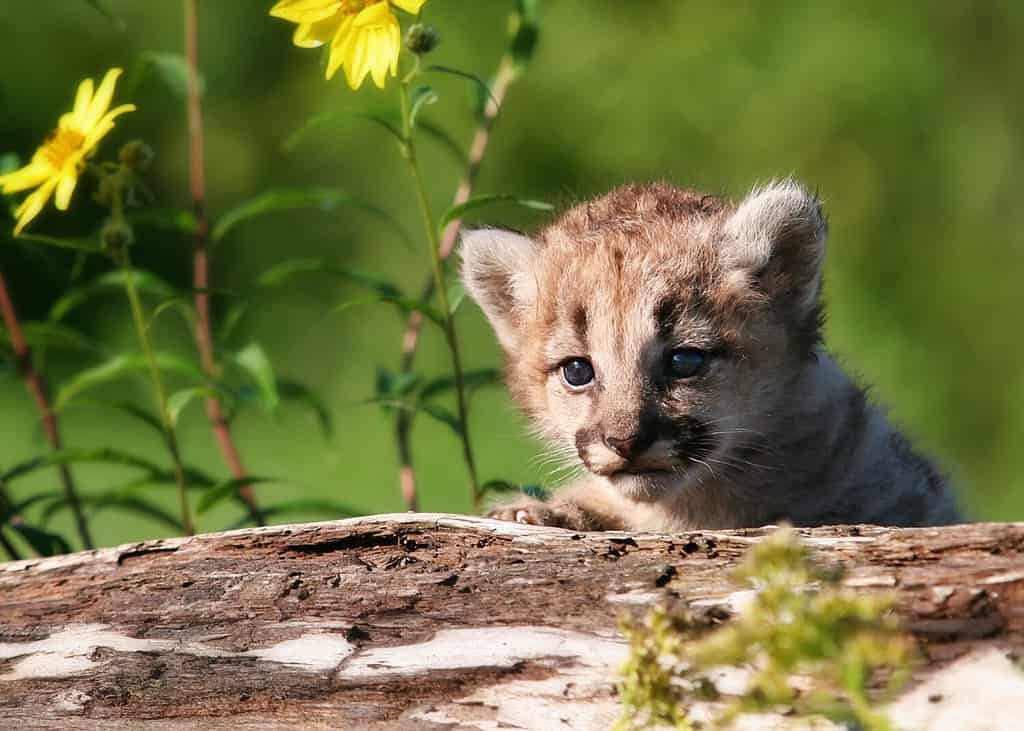
You probably won’t see mountain lions, but they are in the area.
©critterbiz/Shutterstock.com
Mountain Lions are also common in the area, though you will probably never see one. These solitary cats spend much of their time hidden. Even if they see you, you probably won’t see them!
They’re found throughout the Americas, where you can find them in mountains, forests, and deserts. They’re predators with powerful, muscular bodies. They have tawny fur and a long tail. Of course, they also have keen eyesight and a strong sense of smell.
Mountain lions are carnivorous predators and primarily feed on deer, but they are opportunistic hunters and can also target smaller mammals like raccoons and rabbits. They are stealthy hunters and often ambush their prey. They rarely attack people, though they absolutely can.
These predators are solitary except during breeding season and when a female raises her cubs. They have large territories and leave scent markings to prevent individuals from running into each other.
Mountain lions are considered a species of “least concern” on the IUCN Red List, which means they are not currently facing significant threats to their survival.
4. Coyotes
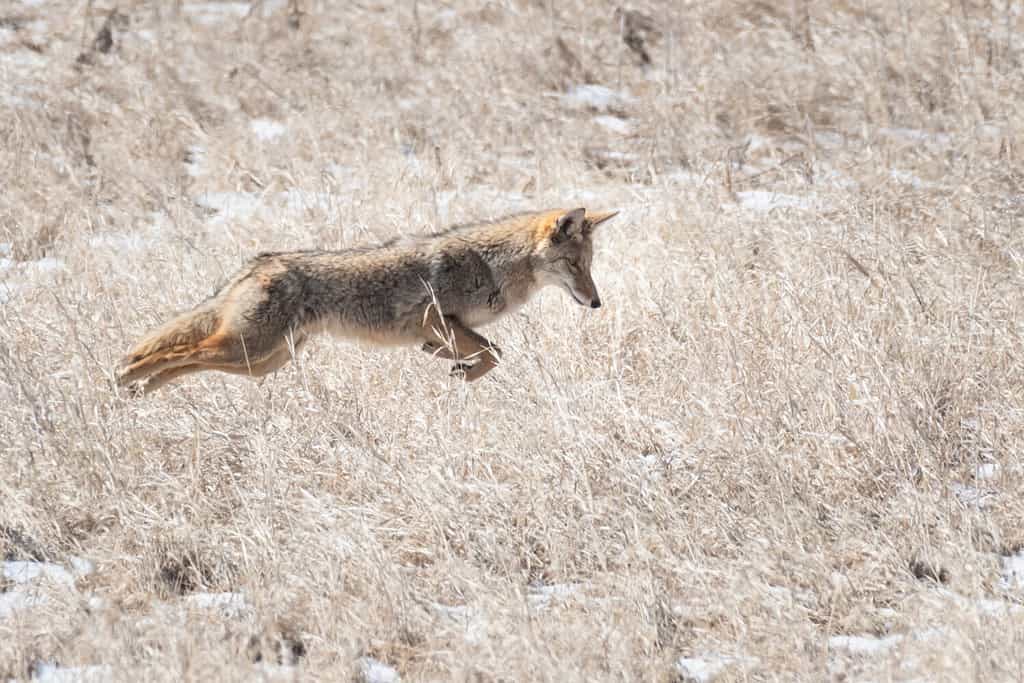
You may sometimes see coyotes in the area, though they are rarer.
©Eivor Kuchta/Shutterstock.com
Coyotes are often seen in Panorama Point, though tourists rarely spot them. They are quite adaptable and resilient canids, so they can survive just about anywhere. They’re a slender dog-like creature that has greyish-brown coats with a lighter-colored belly.
Coyotes are opportunistic omnivores, meaning they have a varied diet that includes small mammals like rodents, rabbits, and squirrels, as well as birds, insects, fruits, and carrion. They are also known to prey on livestock, which has led to conflicts with farmers and ranchers.
These animals are mostly nocturnal and tend to be most active during the early morning and late evening. They are highly intelligent and have excellent hunting skills.
Coyotes use a range of vocalizations, including howls, yips, barks, and growls, for communication. Howling, in particular, serves to establish territory and communicate with other members of their pack.
5. Raptors
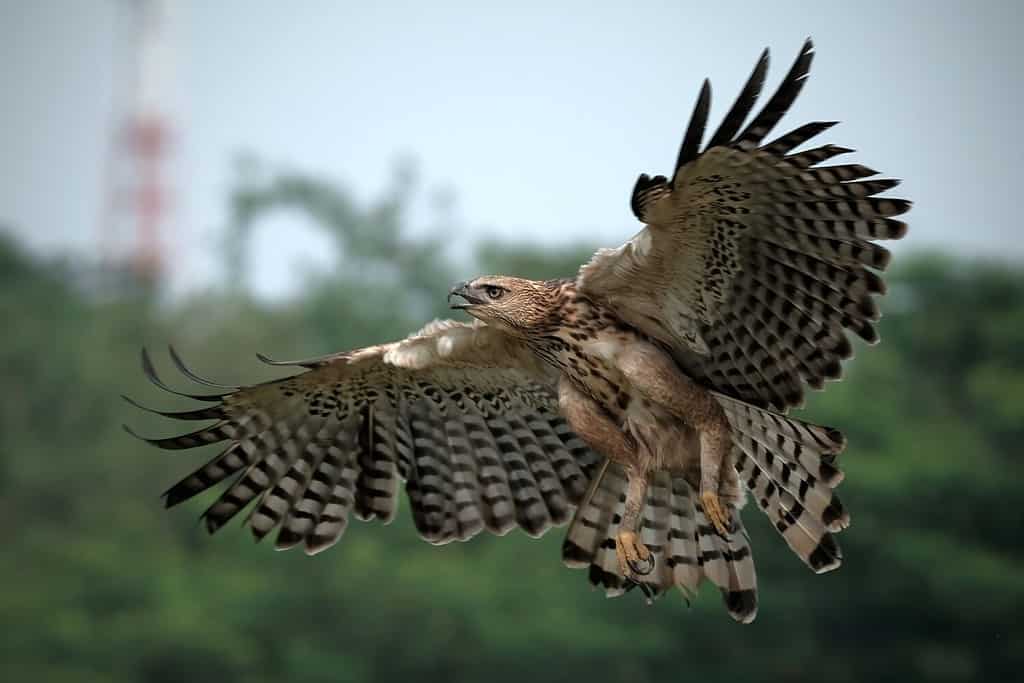
You’ll often see raptors of various kinds flying around the fields surrounding Panorama Point.
©Riadi Pracipta66/Shutterstock.com
Raptors of all sorts can be seen at Panorama Point. These birds of prey are characterized by their sharp talons, hooked beaks, and excellent hunting skills. They are renowned for their predatory behavior and are divided into two main groups: diurnal raptors, which are active during the day, and nocturnal raptors, which are active at night.
There are many different raptor species at Panorama Point. However, they all have keen eyesight, which they use to spot their prey from very far distances. Their hooked beaks help them tear their prey. Their strong talons help them grip prey.
Raptors are carnivorous predators, and their diet consists mainly of small mammals, birds, reptiles, and insects. They’re well-adapted for aerial hunting. They have strong wind muscles and keen aerodynamic skills, which enable them to soar effortlessly and execute precise movements necessary for hunting.
6. Rattlesnakes
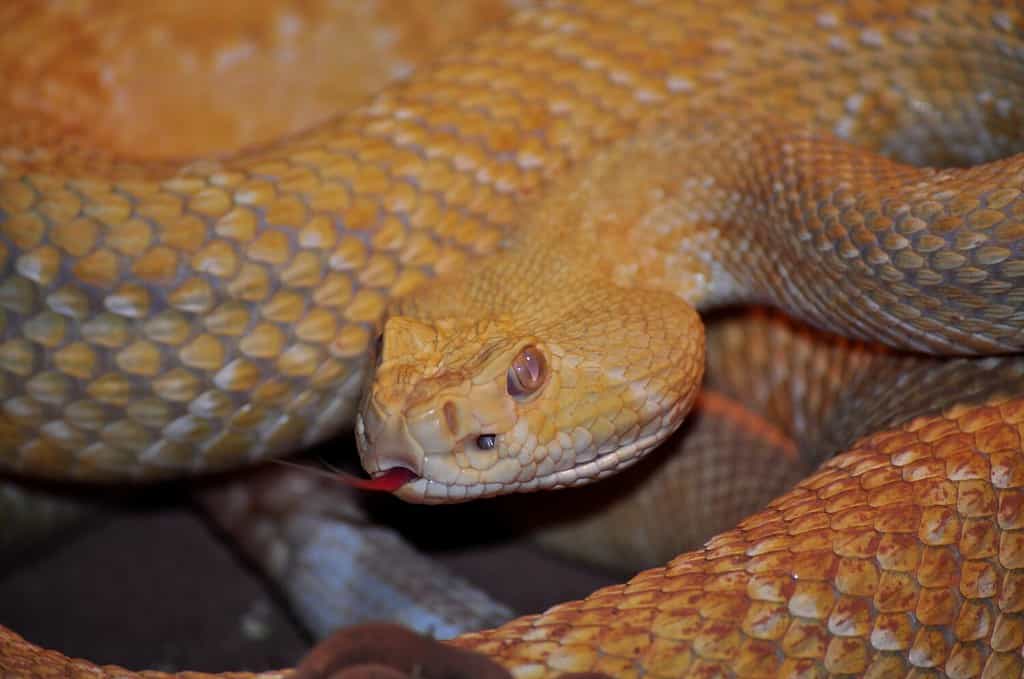
Western Rattlesnakes are found around Panorama Point when it is warmer.
©Zoran zoo-vrt/Shutterstock.com
You can find several venomous rattlesnakes near Panorama Point in Nebraska during the warmer months. Therefore, you have to be careful when exploring the area. While several rattlesnake species exist, one you may encounter is the Western or Prairie Rattlesnake.
Western Rattlesnakes are typically between 2 to 4 feet long, although some individuals can grow longer. They have a distinctive triangular-shaped head, vertically elliptical pupils, and heat-sensitive pits on each side of their head, which they use to detect warm-blooded prey.
Their color can vary a little bit. They’re either gray, tan, or yellowish-brown. They have darker blotches and bands down the length of their body. Their most iconic characteristic is their iconic rattle, which produces their famous rattling sound.
Like other rattlesnakes, Western Rattlesnakes are ambush predators. They use their venom to immobilize and digest their prey, primarily small rodents, lizards, and other small animals.
Western Rattlesnakes possess potent venom, which they use primarily for hunting. Despite this, these snakes are not aggressive and try to steer clear of humans whenever possible. They will usually signal their presence by rattling their tails to alert intruders and only resort to biting if they perceive a threat or feel cornered.
If you encounter a rattlesnake or any other snake in the wild, it’s essential to keep a safe distance and give the animal space to move away. Rattlesnakes usually want to avoid confrontations and will retreat if given the opportunity.
Plants Found at Panorama Point
You’ll find several types of plants in and around Panorama Point. Much of the high plains in Nebraska are characterized by vast grasslands. You can find various species of native grasses, such as little bluestem, big bluestem, switchgrass, Indian grass, and prairie dropseed.
These grasses play a crucial role in the ecosystem, providing habitat for wildlife and contributing to soil health. Both deer and bison primarily consume these grasses, for instance.
During the warmer months, the grasslands may come alive with a wide array of wildflowers. Some common species include purple coneflower, black-eyed Susan, goldenrod, milkweed, yarrow, and sunflowers.
In some areas, you may find sagebrush and other shrubs, especially when it is drier. Trees are less common in these high areas. However, you may see cottonwood trees along the riverbanks or in low-lying areas with plenty of water.
Some parts of Nebraska have a few cactus species, such as the plains prickly-pear cactus. These succulent plants are adapted to the arid conditions of the high plains.
Unfortunately, like many ecosystems, the high plains are susceptible to invasive plant species. Some non-native plants, such as cheatgrass and leafy spurge, can negatively impact native vegetation and wildlife.
Summary of the 6 Animals That Prowl Atop Panorama Point
| Number | Animal |
|---|---|
| 1 | Bison |
| 2 | Deer |
| 3 | Moutain Lions |
| 4 | Coyotes |
| 5 | Raptors |
| 6 | Rattlesnakes |
Thank you for reading! Have some feedback for us? Contact the AZ Animals editorial team.

